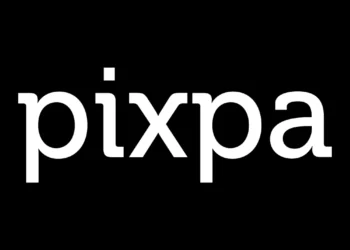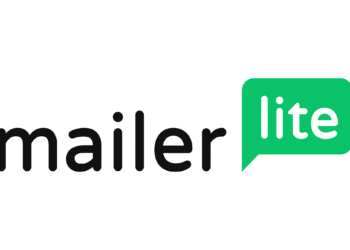What if you could unlock the full potential of email marketing and transform your business with a powerful tool like Mailchimp? With its ability to increase audience insights and automate customer journeys, Mailchimp is a game-changer for businesses and individuals looking to elevate their email marketing strategy. By integrating all contact data into the platform, users can gain a deeper understanding of their audience and create more effective email campaigns.
As a leading email marketing platform, Mailchimp offers a range of features and benefits that can help users master email marketing. From designing automated customer journeys to tracking email open rates and engagement, Mailchimp provides the tools and insights needed to succeed in the world of email marketing. With email marketing remaining one of the most effective ways to connect with audiences, it’s essential to stay ahead of the curve and make the most of platforms like Mailchimp.
Key Takeaways
- Mailchimp can increase audience insights by integrating all contact data into the platform
- Automated customer journeys can be designed to engage customers and enhance user experience
- Targeted audience segments can be used for personalized messaging and improved Return on Investment (ROI)
- A/B testing can be used to determine the effectiveness of different email campaigns
- Mailchimp’s built-in analytics can help users track email open rates and engagement on content
- Email marketing automation can significantly influence sales conversion rates and revenue
Introduction to Mailchimp
Mailchimp is a powerful automation platform that simplifies the process of creating and sending newsletters, making it an indispensable tool for businesses and marketers. With its user-friendly interface and robust features, Mailchimp allows users to design and customize their email campaigns with ease. The platform offers a range of templates and a drag-and-drop editor, making it easy to create visually appealing newsletters.
One of the key benefits of using Mailchimp is its automation features, which enable users to set up automated email campaigns that can be triggered by specific actions or events. This allows businesses to stay in touch with their customers and prospects without having to manually send out emails. Additionally, Mailchimp’s analytics tools provide valuable insights into email campaign performance, including open rates, click-through rates, and conversion rates.
Mailchimp’s automation platform is particularly useful for creating and sending newsletters, as it allows users to set up automated workflows that can be triggered by specific actions or events. For example, a business can set up an automated workflow that sends a welcome email to new subscribers, or a series of emails that nurture leads through the sales funnel. By using Mailchimp’s automation features, businesses can save time and increase efficiency, while also improving the effectiveness of their email marketing campaigns.
What is Mailchimp?
Mailchimp is an all-in-one marketing platform that allows users to create and send newsletters, as well as automate their email marketing campaigns. With its range of features and tools, Mailchimp is an essential tool for businesses and marketers looking to improve their email marketing efforts.
Key Features of Mailchimp
Some of the key features of Mailchimp include its automation platform, email templates, and analytics tools. The platform also offers a range of integrations with other marketing tools and services, making it easy to connect with other apps and services.
Benefits of Using Mailchimp
The benefits of using Mailchimp include its ease of use, flexibility, and scalability. The platform is also cost-effective, with a range of pricing plans available to suit different business needs. By using Mailchimp, businesses can improve the effectiveness of their email marketing campaigns, while also saving time and increasing efficiency.
Setting Up Your Mailchimp Account
Getting started with Mailchimp is straightforward. To begin, you’ll need to create an account. This process is free, and you won’t need to provide a credit card. Once you’ve signed up, you’ll receive an activation email to verify your account. If you don’t see this email in your inbox, be sure to check your spam folder.
After verifying your account, you’ll be taken to the Mailchimp dashboard. This is where you’ll manage your email campaigns and subscriber lists. The dashboard provides an overview of your account activity, including the number of subscribers, emails sent, and opens. Understanding the dashboard is crucial for effective subscriber management and for creating successful campaigns.
Configuring your profile settings is the next step. This includes adding a physical mailing address to your emails, which is a legal requirement. You’ll also need to verify your domain to ensure that your From email address is hosted at a domain you can access. This step is important for maintaining a positive sending reputation and for complying with anti-spam regulations. By following these steps, you’ll be well on your way to setting up your Mailchimp account and starting your email marketing efforts, including managing campaigns and subscriber management.
Creating an Account
Mailchimp’s free plan is a great way to get started, with no credit card required. The platform manages over 14 million users globally, and its audience management tools are designed to help you manage your subscribers effectively. With Mailchimp, you can create additional audiences, but each contact in multiple audiences counts separately towards subscriber limits.
Understanding the Dashboard
The dashboard provides valuable insights into your email campaigns, including open rates and click rates. On average, Mailchimp users see an open rate of around 18-20% and a click rate of about 2-5%. By tracking these metrics, you can refine your campaigns and improve your subscriber management.
Configuring Your Profile Settings
Configuring your profile settings is essential for compliance with Mailchimp’s Terms of Use and anti-spam regulations. This includes verifying your domain and adding a physical mailing address to your emails. By following these steps, you can ensure that your email campaigns are delivered successfully and that you’re providing a good experience for your subscribers.
Building Your Email List
Establishing a robust email list is crucial for successful email marketing campaigns. Mailchimp offers various tools to help users build and manage their email lists. With Mailchimp, users can start an email list for free with up to 2,000 subscribers, making it an excellent platform for businesses and individuals to grow their audience.
One effective way to build an email list is by creating signup forms. These forms can be embedded on a website or shared on social media platforms. By offering exclusive content or promotions, users can incentivize visitors to share their email addresses.
Importing Contacts
Mailchimp allows users to import contacts from various sources, including CSV files and other email marketing platforms. This feature makes it easy to transfer existing email lists to Mailchimp and start sending targeted campaigns. By using email templates, users can personalize their campaigns and increase engagement rates.
Managing Your Audience
Understanding audience engagement is vital for creating effective email marketing campaigns. Mailchimp provides marketing analytics tools to help users track key metrics, such as open rates and click-through rates. By analyzing these metrics, users can refine their campaigns and improve their overall email marketing strategy. With the right approach, businesses can increase their email list growth rate and improve their return on investment.
Designing Your Email Campaigns
When it comes to email marketing, the design of your campaign is crucial. Using an automation platform like Mailchimp can help streamline the process. With Mailchimp, you can choose from a variety of email templates to get started. A well-designed email typically has a width of approximately 600 pixels, while the length can vary. Maintaining consistency in brand aesthetics across emails is crucial, as it directly impacts brand perception and recall.
Visuals in email content can increase the willingness to read the email by 80%. Great visuals enhance engagement in email campaigns. Using grid layouts when designing emails helps ensure alignment and balance throughout the email content, improving overall readability. The recommendation is to save images with a quality setting of around 80% when exporting for web use, balancing clarity and file size.
Choosing an Email Template
Mailchimp offers a range of email templates to suit your needs. You can choose a template that aligns with your brand’s aesthetic and customize it to fit your email marketing goals. Simple design layouts can increase overall engagement by up to 28% compared to cluttered designs.
Customizing Your Template
Once you’ve chosen a template, you can customize it to fit your brand’s voice and style. Adding a call to action (CTA) increases click-through rates by 371%. Emails with personalized subject lines have a 26% higher open rate compared to non-personalized ones. By using Mailchimp’s automation platform, you can create personalized and effective email marketing campaigns that drive results.
Understanding Automation in Mailchimp
Mailchimp’s automation capabilities allow users to create and send newsletters and campaigns more efficiently. With automation, users can set up automated emails triggered by subscriber activity or specific dates, such as a birthday. This feature enables businesses to deliver personalized experiences, which is crucial since 80% of consumers are more likely to purchase from brands that create personalized experiences.
The automation workflow settings include workflow name, from name, from email address, and tracking options. Users can choose to create a single email or an email series in preset automations. Mailchimp also allows for testing of each email using preview and test tools or by sending a test email before finalizing an automation. This ensures that newsletters and campaigns are well-designed and effective.
Automating email campaigns can ensure customers receive timely communications based on their interactions with the business. Mailchimp’s automation features can help increase conversion rates by delivering more personalized and targeted campaigns. By using automation, businesses can save time and resources, and focus on creating high-quality content for their newsletters and campaigns.
Overall, Mailchimp’s automation capabilities provide a powerful tool for businesses to create and send effective newsletters and campaigns. By leveraging automation, businesses can improve their marketing efforts and deliver personalized experiences to their customers.
Segmentation and Targeting
Effective email marketing relies on understanding your audience and tailoring your campaigns to their needs. Segmentation is a crucial aspect of this process, allowing you to divide your email list into targeted groups based on specific characteristics, such as location, engagement frequency, or sources of recent growth. By using subscriber management tools, you can create segments that enable you to send personalized messages, increasing the likelihood of engagement and conversion.
Mailchimp provides a range of features to support segmentation, including pre-built segments and the ability to create custom segments based on tags, groups, and other criteria. For example, you can use email templates to create targeted campaigns that resonate with specific segments of your audience. By combining up to 5 conditions for segmentation, you can create highly targeted campaigns that drive real results.
Segmentation can also help you identify high-priority contacts, such as VIP customers or repeat buyers, and tailor your campaigns to their specific needs. By using geographic targeting, language segments, and other features, you can create campaigns that speak directly to your target audience, increasing the chances of conversion and revenue growth. With Mailchimp’s segmentation tools, you can create an unlimited number of segments, allowing you to develop extensive targeting strategies that drive real results.
Analyzing Your Campaign Performance
To refine and improve future campaigns, it’s essential to analyze the performance of your current campaigns using marketing analytics tools like Mailchimp. With access to real-time stats across campaigns, including emails and SMS, you can quickly understand your marketing performance. Mailchimp analyzes over 481 million historical email campaigns across 41 industries, providing valuable insights to inform your marketing strategies.
Key metrics to track include open rates, click rates, bounce rates, and unsubscribe rates. These metrics provide insights into customer behavior and engagement levels, enabling you to make data-driven decisions to optimize your campaigns. For instance, if you notice a high bounce rate, you may need to review your email list and remove inactive or non-existent email addresses. By using marketing analytics, you can reduce costs by eliminating ineffective campaigns and focus on the most efficient strategies, leading to increased conversions and sales.
Effective use of marketing analytics tools can provide insights into customer behavior and inform marketing strategies. By analyzing campaign performance, you can identify areas for improvement and make targeted changes to increase engagement and conversion rates. With Mailchimp’s analytics capabilities, you can generate reports and track essential metrics, such as total order revenue and unsubscribed recipients, to refine your marketing approach and achieve a higher return on investment.
A/B Testing with Mailchimp
A/B testing is a crucial aspect of email marketing, allowing marketers to gauge the performance of different subject lines, content variations, from names, and send times. By using Mailchimp’s automation platform, users can easily set up and manage A/B tests, optimizing their email campaigns for better engagement and conversion. With A/B testing, email marketing campaigns can be tailored to specific audience segments, increasing the potential for more sales and revenue.
When setting up an A/B test, it’s essential to consider the audience size and test duration. A/B tests require sending to at least 10% of your recipients, and each test combination should ideally be sent to at least 5,000 subscribed contacts for meaningful data. Mailchimp enables users to segment their audience for targeted testing, enhancing campaign effectiveness. By choosing a winner based on click rate rather than open rate, marketers can get more accurate engagement metrics.
Creating A/B Tests
Creating A/B tests in Mailchimp is a straightforward process. Users can test up to 3 variations of a single variable, and premium plan users can test up to 8 campaign variations with multivariate testing. The setup allows for comparison of key aspects like message length, use of emojis, image inclusion, or promotional content in SMS formats. By conducting A/B tests, marketers can boost opens and clicks, potentially leading to more sales.
Interpreting Test Results
When interpreting test results, it’s essential to wait at least 4 hours after sending an A/B test to evaluate results before sending the winning combination. If sent to a very small number of recipients, and none opens or clicks any variations, the last combination sent will be the default for remaining recipients. By using A/B testing, e-commerce businesses can earn up to 20% more from their emails, making it a valuable tool for email marketing campaigns.
Mailchimp Integrations
Mailchimp’s integration capabilities are a key factor in its popularity among marketers. With over 300 applications and platforms to choose from, users can seamlessly connect their accounts to enhance the functionality of their newsletters and campaigns. By integrating Mailchimp with other software, businesses can streamline their marketing efforts, improve customer engagement, and increase campaign effectiveness.
A significant 62% of Mailchimp users utilize at least one integration, demonstrating the importance of this feature. Integrations with e-commerce platforms like WooCommerce and Shopify enable businesses to create targeted messaging, such as order notifications and abandoned cart emails, using synced customer data. Additionally, integrations with social media platforms like Facebook and Instagram allow for improved social media marketing strategies.
By leveraging integrations, businesses can experience a 25% increase in campaign effectiveness and a 122% higher email marketing ROI compared to those not using integrations. Popular integrations include Salesforce, Google Analytics, and SurveyMonkey, which enable businesses to gather customer feedback, track website analytics, and manage customer relationships more effectively. With Mailchimp’s integrations, businesses can create personalized product recommendations, target different customer types, and measure return on investment (ROI) for their campaigns.
Popular Integrations
Mailchimp offers integrations across 17 categories, including e-commerce, analytics, and social media. Users can connect their accounts to various CRM systems, e-commerce platforms, and social media platforms to enhance their marketing efforts. By integrating Mailchimp with other software, businesses can automate tasks, improve customer engagement, and increase campaign effectiveness, making it an essential tool for creating and sending newsletters and campaigns.
Compliance and Best Practices
Understanding email compliance is crucial for businesses to avoid penalties and maintain a positive reputation. Effective subscriber management is key to ensuring compliance, as it involves managing email lists, handling unsubscribes, and obtaining explicit consent from subscribers. Email templates play a significant role in compliance, as they must include customizable unsubscribe links and be designed to avoid triggering spam filters.
Regular maintenance of email lists, including purging invalid addresses, is essential for reducing bounce rates and improving email deliverability. Re-engagement campaigns can help re-establish interest among inactive subscribers, which can account for approximately 20-25% of an email list at any time. By using email templates that are compliant with regulations, businesses can ensure they are sending emails that are less likely to be marked as spam.
Best practices for email campaigns include using double opt-in processes, which help validate email addresses and confirm user interest. This can lead to higher engagement rates, estimated at 50% or more compared to single opt-in processes. By following these best practices and using compliant email templates, businesses can build trust with their subscribers and protect themselves from potential penalties.
Non-compliance with email regulations can lead to significant financial penalties, reputational damage, and even legal repercussions. Therefore, it is essential for businesses to prioritize compliance and use effective subscriber management strategies to maintain a positive reputation and avoid potential risks.
Troubleshooting Common Issues
When using Mailchimp, users may encounter various issues that can hinder their email marketing efforts. To resolve these problems efficiently, it’s essential to utilize Mailchimp’s support resources and marketing analytics. By doing so, users can identify the root cause of the issue and apply the necessary fixes.
Some common issues that users may face include login problems, email delivery issues, and design problems. For instance, if an email is not delivering, it may be due to content that triggers spam filters or the recipient’s email address being invalid. In such cases, users can use marketing analytics to track the performance of their email campaigns and identify potential issues.
To troubleshoot email delivery issues, users can check the email headers for bounce messages or spam filter notifications. Additionally, they can use Mailchimp’s built-in tools to test their email campaigns and identify potential problems. By taking a proactive approach to troubleshooting, users can ensure that their email campaigns are delivered successfully and that their marketing efforts are effective.
Login Problems
Login issues can be frustrating, but they can often be resolved by checking the email address and password or by resetting the password. Mailchimp’s support team can also assist with login-related issues.
Email Not Delivering
If an email is not delivering, it’s crucial to check the email content and recipient’s email address. Users can also use marketing analytics to track the performance of their email campaigns and identify potential issues.
Design Issues
Design problems can be resolved by using Mailchimp’s built-in design tools or by seeking assistance from the support team. By utilizing these resources, users can create visually appealing email campaigns that engage their audience and drive results.
Conclusion and Next Steps
As we conclude our journey through the powerful features of Mailchimp, the leading email marketing and automation platform, it’s clear that this tool offers invaluable opportunities for businesses of all sizes to engage their audience effectively. By mastering the art of Mailchimp, you can create impactful email campaigns, automate your marketing efforts, and track your progress with insightful analytics.
To continue your Mailchimp mastery, we encourage you to explore the platform’s comprehensive resources and engage with the vibrant community of users. Stay updated on the latest features, best practices, and industry trends to ensure your email marketing strategy remains cutting-edge and effective. With Mailchimp’s powerful capabilities at your fingertips, the sky’s the limit when it comes to driving customer engagement, boosting conversions, and ultimately, achieving your business goals.
Remember, the key to successful email marketing lies in consistently creating valuable content, optimizing your campaigns, and leveraging the insights provided by Mailchimp’s robust analytics. By embracing the platform’s features and continuously learning, you’ll position your business for long-term growth and success in the dynamic world of digital marketing.
FAQ
What is Mailchimp?
Mailchimp is a leading email marketing platform that helps businesses and individuals create, send, and analyze email campaigns. It offers a range of features, including automation, subscriber management, and marketing analytics.
What are the key features of Mailchimp?
Mailchimp’s key features include email campaign creation and management, automated email workflows, subscriber list management, email templates, and marketing analytics.
What are the benefits of using Mailchimp?
The benefits of using Mailchimp include simplifying the email marketing process, automating workflows, creating personalized campaigns, and gaining insights into campaign performance through detailed analytics.
How do I create a Mailchimp account?
To create a Mailchimp account, you can sign up on the Mailchimp website. The process involves providing your basic information, setting up your profile, and configuring your account settings.
How do I build an email list in Mailchimp?
You can build an email list in Mailchimp by importing contacts, creating signup forms, and managing your audience through segmentation and tags.
How do I design email campaigns in Mailchimp?
Mailchimp offers a range of email templates that you can customize with your own content, images, and branding. The platform’s design tools make it easy to create visually appealing and effective email campaigns.
What are the automation features in Mailchimp?
Mailchimp’s automation features allow you to set up automated email workflows, such as welcome emails, abandoned cart reminders, and newsletters, to streamline your email marketing efforts.
How do I segment my audience in Mailchimp?
Mailchimp allows you to create segments based on various subscriber attributes, such as location, purchase history, and engagement levels. You can also use tags and groups to further refine your targeting.
What kind of analytics does Mailchimp provide?
Mailchimp’s analytics dashboard offers insights into key metrics, such as open rates, click-through rates, and campaign performance. You can use this data to optimize your email marketing strategy and improve future campaigns.
How do I set up A/B testing in Mailchimp?
Mailchimp’s A/B testing feature allows you to create and compare different versions of your email campaigns to determine the most effective elements, such as subject lines, content, and design.
What integrations does Mailchimp offer?
Mailchimp integrates with a wide range of popular applications, including e-commerce platforms, CRM tools, and social media channels, allowing you to streamline your marketing efforts and enhance your email campaigns.
How do I ensure compliance with email marketing best practices?
Mailchimp provides guidance on email compliance, including managing unsubscribes, maintaining a positive sender reputation, and adhering to industry regulations. It’s essential to understand and follow these best practices to avoid issues with email deliverability.
Where can I find troubleshooting support for Mailchimp?
Mailchimp offers various support resources, including an extensive knowledge base, community forums, and direct customer support, to help users resolve common issues, such as login problems, email delivery issues, and design-related challenges.





